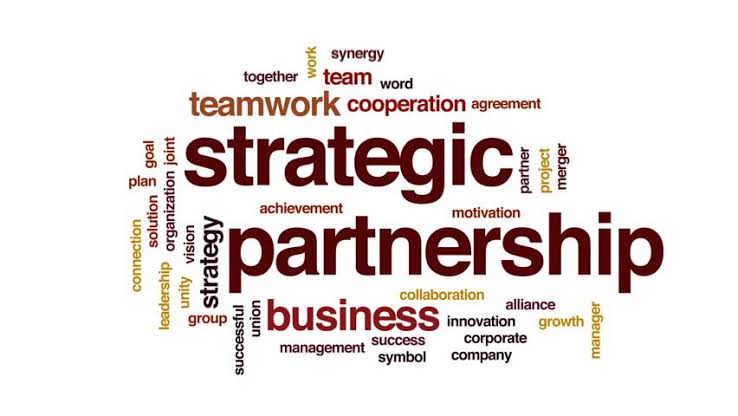Building strong partnerships has become an essential strategy for success in 2025, whether in business, education, technology, or community initiatives. Partnerships allow individuals, organizations, and companies to pool resources, share knowledge, and achieve goals that would be difficult to accomplish alone. The science behind building strong partnerships lies in understanding human behavior, trust, communication, and strategic alignment. By mastering these elements, partners can create long-term, mutually beneficial relationships that foster growth and innovation.
Understanding the Foundation of Strong Partnerships
Successful partnerships are built on a foundation of trust, shared goals, and mutual respect. Before forming any collaboration, it is essential to ensure that both parties have aligned visions and complementary strengths.
Key elements of a strong foundation include:
- Shared Objectives that define why the partnership exists.
- Mutual Benefits ensuring each party gains value from the collaboration.
- Clear Expectations to avoid misunderstandings and conflicts.
- Commitment to Long-Term Success rather than short-term gains.
A partnership built on a solid foundation increases the likelihood of sustainable and productive outcomes.
The Role of Communication in Partnerships
Effective communication is the backbone of any strong partnership. Without clear and open dialogue, even well-intentioned collaborations can falter.
Strategies for successful communication include:
- Regular Check-Ins to monitor progress and address concerns.
- Transparent Information Sharing to maintain trust and alignment.
- Active Listening to understand each partner’s needs and challenges.
- Conflict Resolution Mechanisms to resolve disagreements constructively.
Strong communication fosters understanding, prevents misinterpretations, and strengthens the relationship over time.
Building Trust and Reliability
Trust is the most critical factor in developing and maintaining strong partnerships. A reliable partner who delivers on promises creates confidence and encourages long-term collaboration.
Ways to build and maintain trust include:
- Consistency in Actions by following through on commitments.
- Accountability for mistakes and transparent problem-solving.
- Fairness and Integrity in decision-making and resource sharing.
- Reliability in Performance by meeting deadlines and quality expectations.
When trust is established, partners can focus on growth instead of constantly verifying each other’s actions.
Aligning Goals and Values
Partnerships thrive when both parties share similar goals and values. Misaligned objectives can lead to conflicts and inefficiencies, weakening the collaboration.
Steps to ensure alignment include:
- Defining a Common Mission that both parties are passionate about.
- Agreeing on Measurable Goals to track progress and success.
- Establishing Core Values to guide decision-making and behavior.
- Periodically Reviewing Alignment to adjust strategies as conditions change.
Aligned goals ensure that efforts remain coordinated and productive over time.
Leveraging Complementary Strengths
The most effective partnerships capitalize on the unique strengths of each partner. By combining skills, resources, and expertise, partners can achieve outcomes greater than what either could accomplish individually.
Examples of leveraging strengths include:
- One Partner Providing Expertise while the other offers market access.
- Shared Resources like technology, facilities, or distribution networks.
- Collaborative Innovation where diverse knowledge creates new solutions.
- Joint Problem-Solving to overcome challenges with combined perspectives.
Recognizing and utilizing complementary capabilities leads to more efficient and successful collaborations.
Embracing Flexibility and Adaptability
In 2025, the business and social landscapes are constantly evolving. Strong partnerships require the ability to adapt to changing conditions, market trends, and external pressures.
Key practices for adaptability include:
- Reevaluating Strategies regularly to meet new challenges or opportunities.
- Adjusting Roles and Responsibilities as the partnership evolves.
- Remaining Open to Innovation and exploring new collaboration methods.
- Learning from Setbacks to strengthen the partnership moving forward.
Flexible partnerships are better equipped to handle uncertainties and maintain long-term relevance.
Measuring and Celebrating Success
To sustain strong partnerships, it is essential to measure outcomes and celebrate achievements. Recognizing progress reinforces commitment and motivates all parties to continue collaborating.
Best practices include:
- Tracking Key Performance Indicators (KPIs) that reflect the partnership’s goals.
- Acknowledging Contributions of all parties to maintain engagement.
- Celebrating Milestones like successful launches, completed projects, or growth metrics.
- Conducting Periodic Reviews to refine strategies and address any weaknesses.
Celebrating success not only strengthens relationships but also creates a sense of shared accomplishment.
Conclusion
The science of building strong partnerships in 2025 involves a blend of trust, communication, goal alignment, and adaptability. By leveraging complementary strengths, maintaining transparency, and consistently nurturing the relationship, partnerships can thrive in competitive and rapidly changing environments. Strong partnerships lead to innovation, shared success, and long-term growth, making them invaluable in both professional and personal contexts. Organizations and individuals who master these principles will build resilient collaborations that stand the test of time.



